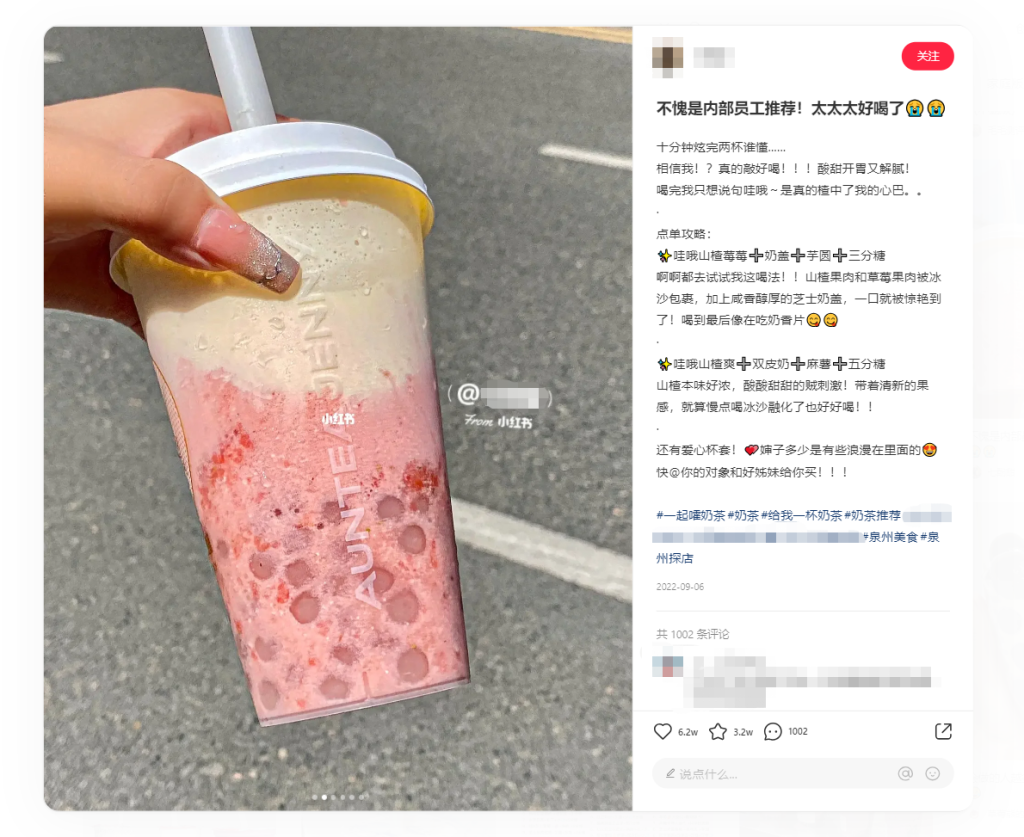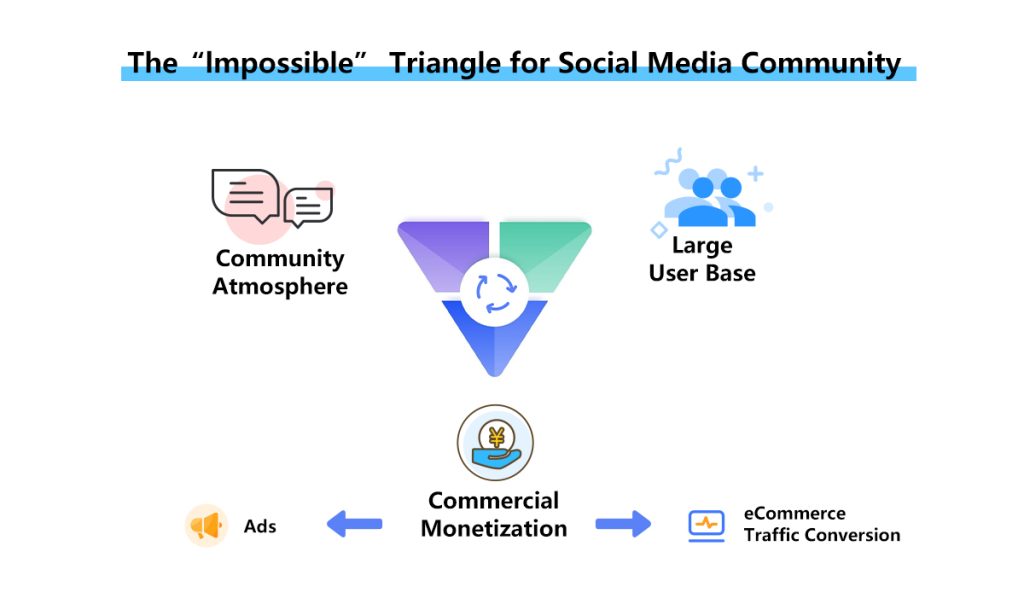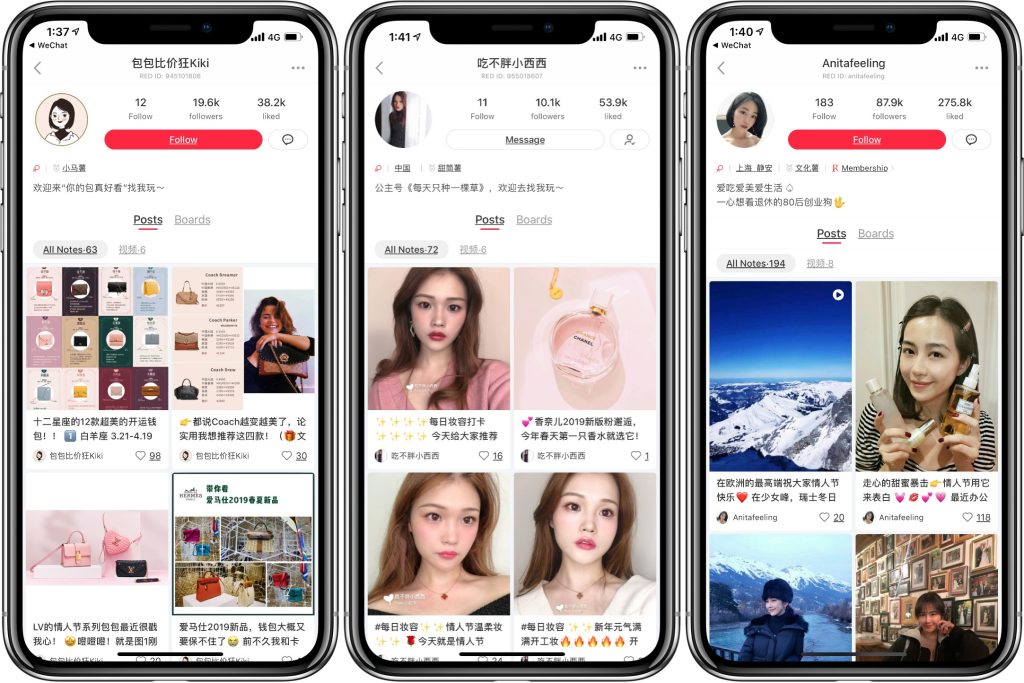RED, aka 小红书, Xiaohongshu, or, Little Red Book. A unique platform of a combination of social media and eCommerce.
Amidst the internal ecological iteration of WeChat Channels, Douyin (Chinese TikTok), and KuaiShou, RED has emerged as one of the fastest-growing mobile Internet products in China. With its daily activity doubling post-2020, it has witnessed an impressive surge in popularity.
Throughout its ten-year existence, RED has cultivated a thriving community with over 260 million monthly active users and an astounding 69 million content creators. Every day on this platform, these creators contribute over 3 million posts encompassing a wide range of topics. From fashion to beauty to travel experiences and beyond, RED holds a treasure trove of content that intertwines seamlessly with many Chinese lives today.
RED Confidence
The journey of RED began in 2013, with its users’ image of female-focused, young, well-educated, residing in 1st-tier cities (by the year 2023, this remains the same). These users possessed excellent expression skills, a keen sense of aesthetics, and an insatiable appetite for shopping. From its humble beginnings, RED has grown from nothing to everything within its community.
Fast forward to May 2023, and RED has experienced an astonishing surge in average daily usage time, reaching 72.67 minutes. This remarkable growth is evident when comparing it to the mere 26.49 minutes recorded in 2018 and the still commendable 55.31 minutes observed in 2022. Such exponential growth positions it as a very top performer among its competitors in China. Distinguishing itself from similar community-based social media platforms, Xiaohongshu continuously attracts traffic due to its wealth of captivating UGC (User Generated Content), remarkable user engagement levels, and the vibrant interactive atmosphere it fosters. At an ecological level, it has established an approbatory and expansive community driven by regular users.

UGC stands as the defining characteristic that sets Xiaohongshu apart – here lies a space where everyday users can effortlessly share concise yet logically organized texts without any arduous efforts. A single picture accompanied by a sentence can effectively convey thoughts and sentiments within this “decentralized” RED ecosystem – a platform that empowers every ordinary individual by offering them freedom and opportunities for creating and engaging content.
One of the reasons why normal users are drawn to RED is because even the most seemingly insignificant details can find a place of interest within its platform. The underlying logic of RED prioritizes whether users have a desire to express themselves, caring less about their prominence or status. In fact, at one point in RED’s internal workflow, abstract user needs were encapsulated as: “I want to post (content), and I want to be seen.”
From a logical standpoint, as a decentralized platform, RED emphasizes fulfilling two fundamental user needs: connecting with others who share similar interests and discovering compelling content. With the support of product mechanisms and algorithms, individual expressions become akin to messages drifting in bottles – reaching individuals with comparable interests, facilitating new rounds of positive interaction where mutual support and feedback naturally flourish.
Through this dynamic process, Xiaohongshu has successfully cultivated an environment that fosters meaningful connections among like-minded individuals. It enables them to engage in vibrant discussions while receiving validation for their contributions from fellow community members who appreciate their unique perspectives.
RED Algorithm
The decentralized product design of RED is evident, as even new users with no followers can gain significant exposure if their content is of high quality. Users who engage with the community by liking and favoriting content will find it appearing in their subsequent information feeds. The way recommended content appears on Xiaohongshu is cleverly designed – it doesn’t force advertisements upon users or disrupt the interactive atmosphere they seek.
As early as 2016, RED began implementing algorithms to recommend content. Over time, these algorithms have become increasingly intelligent through continuous learning. The current algorithm relies on precise distribution and strongly considers the two-way marking system that associates both content and users. From a dynamic mechanism perspective, its chosen two-way marking algorithm proves more efficient and beneficial for amateurs. The platform encourages sharing while simultaneously facilitating the discovery of previously unknown aspects.

The unpredictable nature of “viral” posts on Xiaohongshu exemplifies its dynamic environment and underlying algorithm logic. Traffic does not exclusively gravitate towards a fixed group of content creators; instead, when normal users go long periods without any activity, the platform may incentivize them to post by offering exposure rewards.
Additionally, compared to other Chinese short video platforms such as Douyin and KuaiShou, creating images and texts on Xiaohongshu incurs lower or even no costs. This low-barrier entry for stress-free content creation has attracted a large number of creators at all levels – bringing forth an abundance of diverse and engaging content within the platform.
What is a "Viral" post?
To be “viral” on social media means that a piece of content, such as a post, video, or image, has become extremely popular and is being shared by a large number of people on various social media platforms.
RED Community to Business
Community is the one and only thing that connects content, creators, and content consumers. For a highly active community to thrive, it must transform its traffic and ecosystem into tangible commercial value, ensuring a positive cycle for the entire community operation.

In the past and now, all the social media communities faced an impossible triangle: maintaining a good community atmosphere, retaining a large user base, and enabling considerable commercial monetization. Improving the efficiency of commercial monetization within such massive communities remains a challenge that growing platforms like RED must address and optimize.
There are two main models for commercial monetization within social media communities: advertising and eCommerce traffic conversion into GMV. RED primarily generates revenue through advertising. However, this year’s step-by-step strategy in livestream eCommerce indicates that it aims to increase the proportion of eCommerce revenue as part of its positioning.
Xiaohongshu has been proactive in implementing its eCommerce strategy since 2014. Initially, with little millions of DAU (Daily Active Users), converting them through the eCommerce funnel resulted in limited GMV. At that period, eCommerce served as more of an infrastructure component catering to specific users’ needs. But in 2018, when evaluating multiple business focuses on the platform during a high-growth year for their community, Xiaohongshu dedicated resources towards nurturing their community-driven growth while still exploring new avenues for monetization.

As May this year saw official data revealing over 250 million registered users on RED – the platform continues to refine its strategies for sustainable growth while expanding opportunities within its thriving ecosystem.
The year 2019 was marked as a significant turning point for Xiaohongshu. In June that year, the platform decided to standardize its rules and enhance its infrastructure. Regarding positioning, RED committed itself to integrating brands and KOLs (Key Opinion Leaders) as an integrated platform, fostering deep collaboration to improve overall business efficiency. And moving on to the first quarter of 2020, Xiaohongshu officially launched its livestream business sector – a strategic addition to its offerings.
When examining the advanced commercial monetization strategies RED has employed over time, it becomes apparent that each tactic is carefully adjusted based on ongoing assessments and implemented with a clear objective of improving efficiency. Strategies include increasing investments in video-related initiatives this year and launching anchor-driven commerce features with distinct platform-style characteristics – all geared towards optimizing their business conversion rates through well-executed operations.
Experiencing several years of adjustments, debates, and balancing acts within its ecosystem, RED has witnessed substantial growth in the scale of its flagship products – proof of its steadfast commitment to innovation and continuous improvement.
RED Challenges
As previously mentioned, Xiaohongshu established its livestream business sector as an independent department. However, the centralized nature of celebrity or KOL livestream doesn’t align perfectly with RED’s UGC tonality – celebrities and KOLs form a small portion of the platform, but anchors garner substantial attention and stand at the center of public perception.

Finding a balance between being labeled as a “star-focused livestream” platform and maintaining harmony with the decentralized community consensus is currently one of RED’s challenges that needs addressing.
Considering the material and spiritual needs of its community users, female celebrities and KOLs’ experiences in cosmetics, makeup, self-care and goods recommendations resonate well with RED’s community tone. When they engage on RED through short videos and livestreams, sharing their lifestyles, it dramatically appeals to consumer users within the community.
Although there is still a deep conversion funnel from content to traffic and from traffic entrance to paid exit, given RED’s current industry status, celebrities, KOLs, and normal content creators have ample motivation to explore livestream opportunities provided by the platform.
For RED itself, increasing the portion of video content on the platform has clear advantages in expanding content reach. However, there exists a risk: as it has deeply rooted in images and text-driven interactions with high DAU, exceeding 45% of video content may lead to increased bounce rates over time for its original users.
Achievements under pressure – with its rapidly growing user base, here come more new challenges for RED. The evolving environment demands fresh strategies, while past experiences cannot be entirely relied upon. These immediate challenges pose significant stress tests for both platform strategy and operations alike.

For 10 years, RED has predominantly relied on advertising as its primary source of commercial revenue. However, this year’s platform has implemented a layered transaction strategy, indicating a gradual increase in the proportion of eCommerce revenue.
RED stands as a product that has successfully navigated various cycles. Previous achievements were primarily focused on growth, resulting in an exponential increase in Chinese user adoption. As strategic adjustments continue, the responsibility and pressure to maintain this success become even more significant.
With millions of users relying on Xiaohongshu for their lifestyle needs and countless businesses looking to leverage its platform for future growth, it becomes crucial for the platform to strike a balance between maintaining stability, sustaining growth, and boosting the efficiency of commercial monetization.
RED is poised to break new ground in eCommerce and realign its priorities accordingly.


